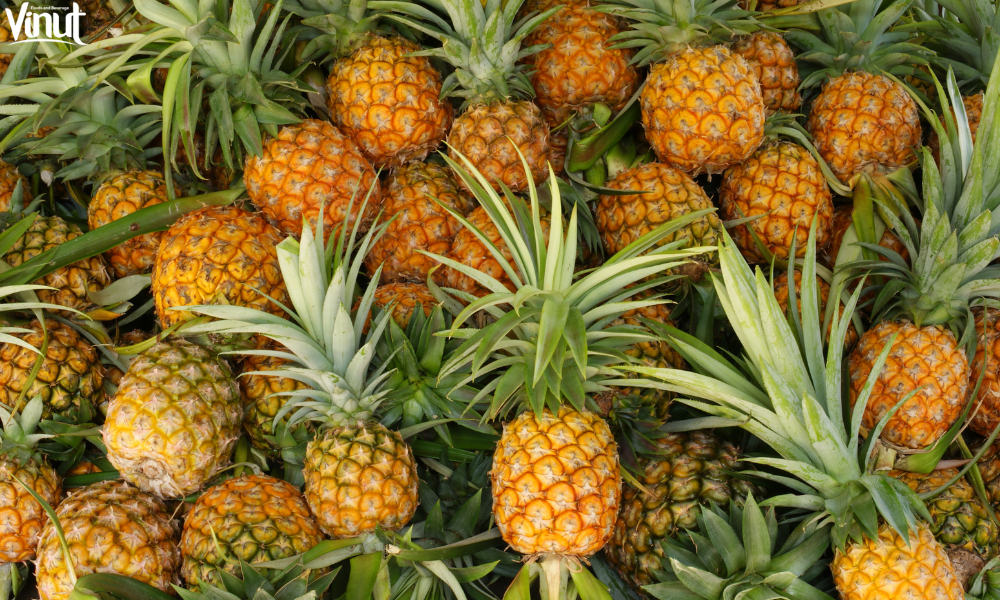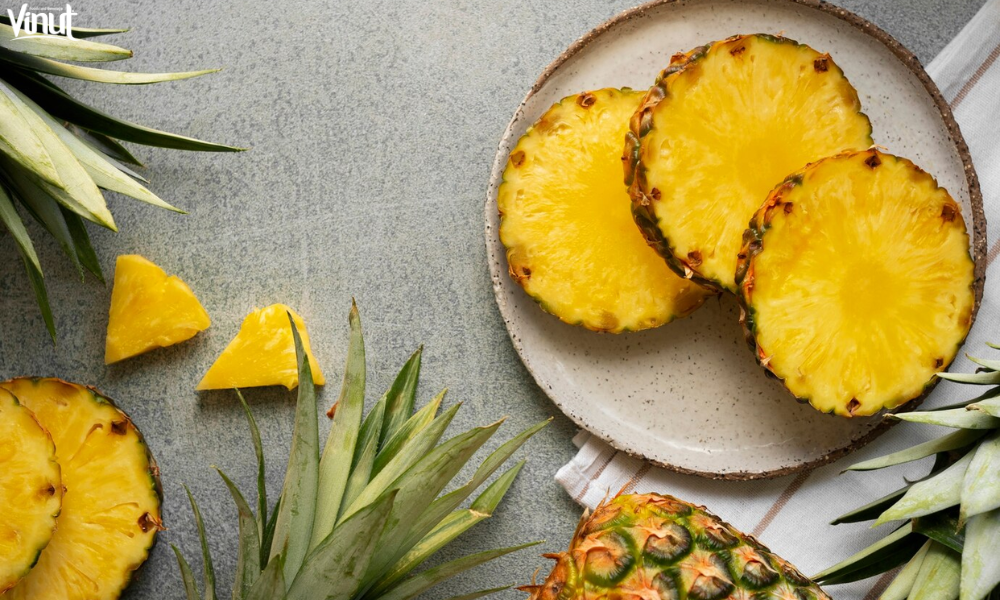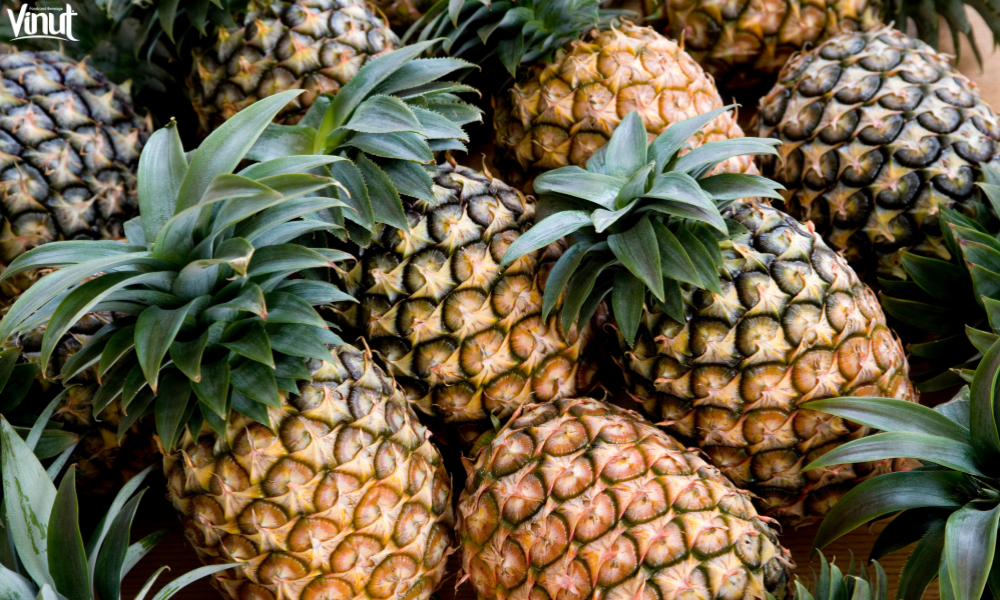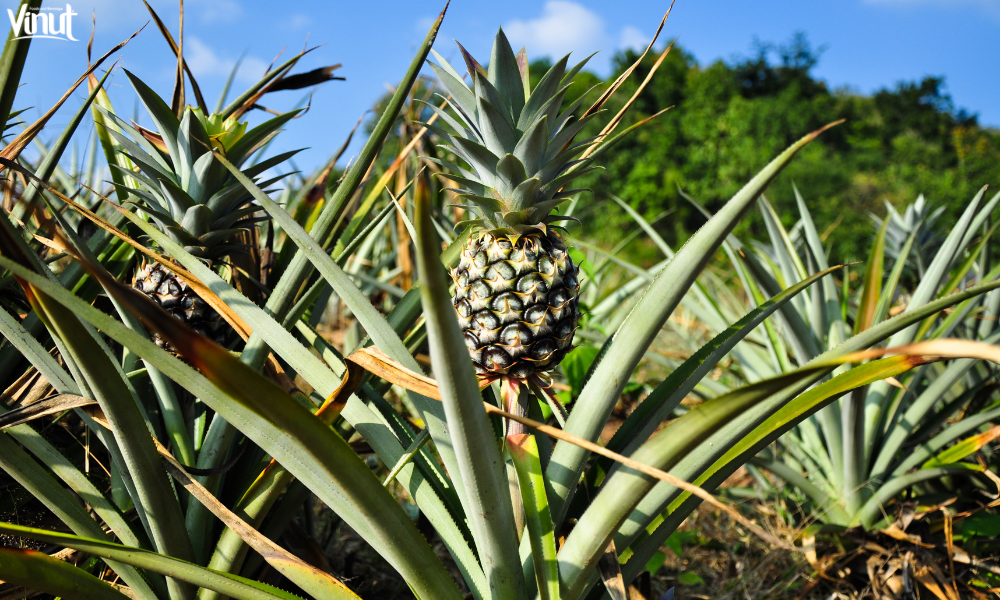If you’re looking for a tropical fruit that embodies the essence of sunshine and island vacations, look no further than the pineapple. This spiky, golden fruit is not only delicious but also packed with health benefits and a fascinating history.
In this article, VINUT will dive deep into the world of pineapples, exploring their origins, cultivation, culinary uses, and even some surprising facts that will make you appreciate this fruit even more.
The Origins
The pineapple, scientifically known as Ananas comosus, is native to South America, particularly the regions of Paraguay and southern Brazil. Indigenous peoples in these areas were the first to cultivate and enjoy this sweet and tangy fruit, which they called “anana.” It was highly valued for its unique flavor and medicinal properties.

The Journey to Europe

The journey of this fruit from South America to Europe is a fascinating tale of exploration and adventure. When Christopher Columbus encountered the fruit during his second voyage to the Caribbean in 1493, he was captivated by its taste and aroma. He called it “piña,” the Spanish word for pinecone, due to its resemblance to the pinecone’s texture.
Pineapples in the New World
This fruit soon became a symbol of hospitality in the New World. Native Americans shared their knowledge of cultivating this fruit with early European settlers, who brought it back to their home countries. In the 17th century, pineapples were grown in hothouses in Europe, making them a symbol of wealth and luxury.

The Anatomy

To truly appreciate the fruit, it’s essential to understand its anatomy. The fruit is a composite of multiple berries fused, and its spiky exterior hides the sweet, juicy flesh inside. Each fruit is crowned by a cluster of tough, pointed leaves, often called the “crown” or “top.”
Cultivating
They are primarily grown in tropical and subtropical regions. The process of cultivation is both fascinating and labor-intensive. Pineapple plants require well-draining soil and plenty of sunlight. They are typically propagated by planting the crowns of mature ones, which grow into new plants. It can take up to two years for a plant to produce its first fruit.

Health Benefits
Beyond their delightful taste, the fruit offers a range of health benefits. They are rich in vitamin C, which supports the immune system, and contain bromelain, an enzyme that aids digestion and reduces inflammation. Pineapples are also a good source of fiber and provide essential minerals like manganese.

Culinary Uses
They are incredibly versatile in the kitchen. They can be enjoyed fresh, juiced, grilled, or even used as a topping for pizzas and burgers. Pineapple juice is a popular ingredient in cocktails, such as the classic Piña Colada. In baking, pineapple can add sweetness and moisture to cakes and muffins.

Fun Facts

- Slow Ripening: Unlike many other fruits, this fruit does not ripen significantly after being harvested. So, it’s essential to pick them when they are at their peak of ripeness.
- Unique Growth: The plants of this fruit grow only one fruit at a time, and it can take up to two years for a single plant to produce another pineapple.
- Versatile Decoration: the leaves and crowns are popular additions to floral arrangements and centerpieces, adding a touch of exotic beauty to any event.
- Symbol of Hospitality: In the southern United States, it is a symbol of hospitality. It’s not uncommon to see pineapple motifs on welcome signs and home decor.
Pineapple Around the World
While this fruit is undoubtedly associated with tropical regions, it has found its way into cuisines around the world. In Thailand, for instance, you’ll find pineapple fried rice, a delightful combination of sweet and savory flavors. In Hawaii, the pineapple is a significant part of the culture and even features on the state’s flag.

The pineapple is not just a fruit; it’s a symbol of hospitality, a tropical delight, and a source of numerous health benefits. Its journey from the jungles of South America to tables around the world is a testament to human curiosity and the love of good food.


 Juice Concentrate
Juice Concentrate Vegetable juice
Vegetable juice Juice Milk
Juice Milk Stand Up Pouches
Stand Up Pouches









